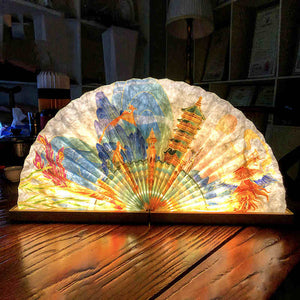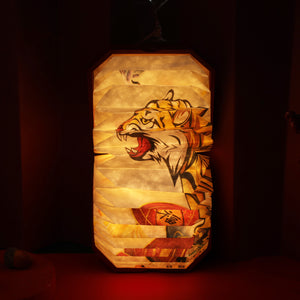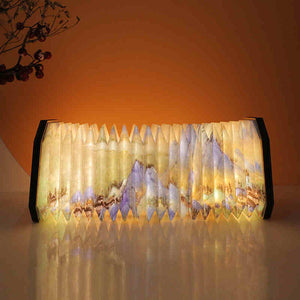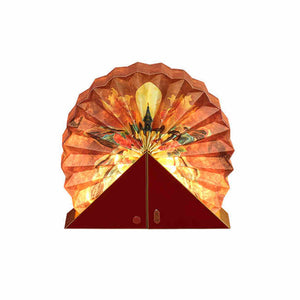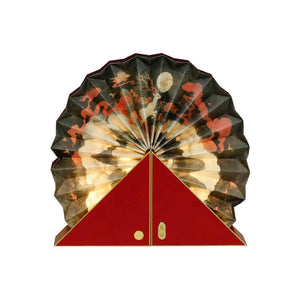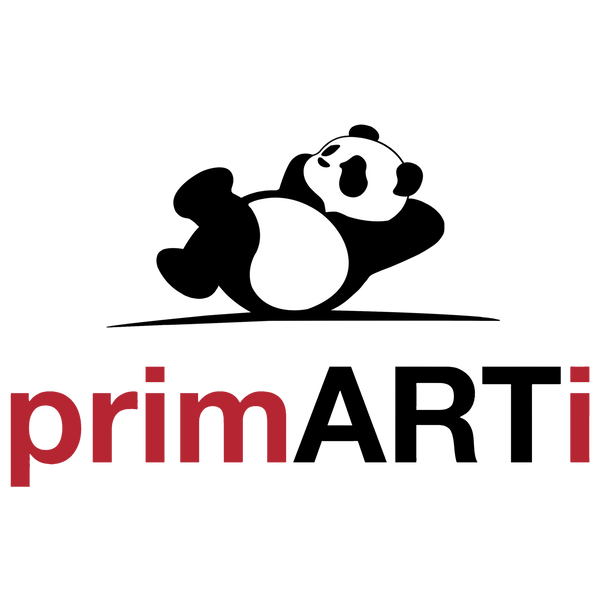
Leaving the Times' Elements in the Latticework of Paper-Cutting

Introduction
Chang Yangyang, a post-90s native of Luoyang, Henan Province, is the fifth-generation inheritor of Mengjin paper-cutting. Unlike many of his peers who are into fashion games and hip-hop rock, he has fallen in love with the traditional paper-cutting craft, commonly known as "jiāo huā."

First, fold the red paper a few times, then pick up the scissors and start creating. In just two or three minutes, four lifelike zodiac tiger paper-cutting works are completed.
Mengjin paper-cutting, also known as "jiāo huā," is an important part of the Heluo culture and is a provincial intangible cultural heritage of Henan.
A Family Legacy of Paper-Cutting
Chang Yangyang grew up in a family of paper-cutters and was deeply influenced by his grandmother, developing a strong interest in paper-cutting from a young age. At the age of 27, he has been in the paper-cutting industry for nearly 10 years and has created thousands of paper-cutting works.
Chang Yangyang's paper-cutting studio is filled with works of diverse styles. He says that before starting to cut, one needs to have a clear idea of the content and be confident in the design. Each paper-cutting session is an impromptu creation. The longest work he has cut is 16 meters long.
After graduating from high school, Chang Yangyang participated in the Chinese New Year Paper-Cutting Competition and won a bronze award. At the award ceremony, he met more than 100 paper-cutting enthusiasts, including national-level paper-cutting inheritors, but he was the only young face there. Without fresh blood, the development of paper-cutting art is in danger. This realization deeply moved Chang Yangyang, and he decided to take action to protect and inherit this folk craft.
In 2010, Chang Yangyang, who was working in Shenzhen, decided to quit his job and return home to focus on paper-cutting. He visited folklore scholars and paper-cutting artists, read books and articles related to paper-cutting, and absorbed the styles and experiences of the older generation. He also copied some folk paper-cutting works. To this day, he still maintains a daily paper-cutting time of at least five hours.
"At the beginning of my career in paper-cutting, my family and friends did not support me. They did not understand why, as the only boy in the family, I spent my days cutting paper like a girl or a young wife. They also questioned how I would make a living," Chang Yangyang said. "Nevertheless, I continued to study and practice, cutting paper until one or two in the morning. Perhaps seeing my persistence, my parents began to accept and support me, and now my sister has also joined in."
Paper-cutting requires the ability to shape the design with a single cut, which demands a certain level of imagination and mastery of abstract forms. After years of practice, freehand paper-cutting has become second nature to Chang Yangyang. One of his most satisfying works is a 9-meter-long piece titled "The Twenty-Four Solar Terms," which took him a month to complete and reflects proverbs and seasonal orders from different regions of Henan.
Chang Yangyang is well aware that to keep traditional crafts relevant in today's fast-paced society, innovation is essential. His works are not limited to traditional subjects like birds, beasts, flowers, and fish. He also incorporates historical culture and modern elements into his creations. Chang Yangyang creates paper-cuttings based on current hot topics, such as paper-cuttings themed around the 19th National Congress of the Communist Party of China, the 40th anniversary of reform and opening up, and during the World Cup, he created portrait paper-cuttings of Messi, Cristiano Ronaldo, and Neymar to introduce more young people to the art of paper-cutting and intangible cultural heritage.
When he is not busy, Chang Yangyang often sits on a stool by the street outside his studio, cutting paper. Many passers-by, including citizens and tourists, stop to watch and take photos. Sometimes, he gives away his finished works to them. He also regularly visits schools, communities, and rural areas to teach paper-cutting skills for free, hoping to better preserve this intangible cultural heritage.
